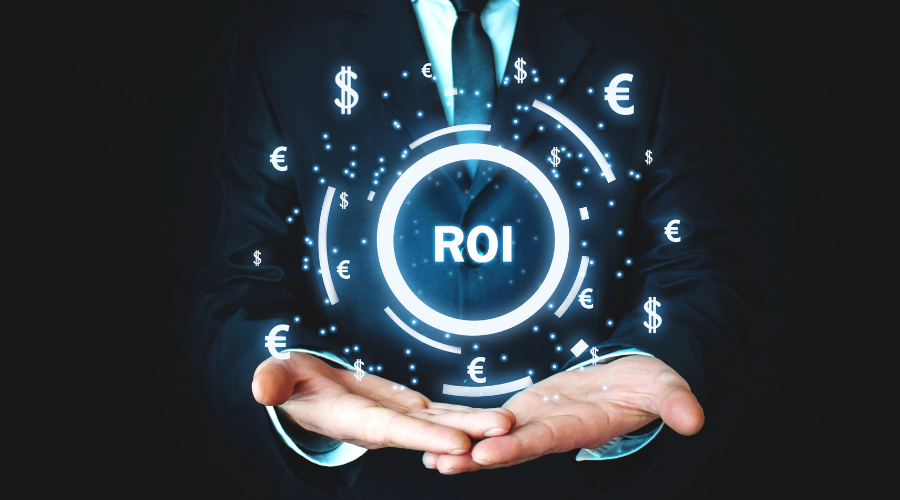Maximize ROI with Personalized Email Marketing in 2025
Introduction
Hello! You’re an e-commerce store owner, digital marketing manager, CRM expert, or small business owner. You understand how getting to customers effectively matters the most. And when it comes to email, generic blasts just don’t work anymore.
Personalized email marketing is not just a fad—it’s the foundation of intelligent, results-driven campaigns in 2025. With changing customer expectations, and AI-assisted tools becoming increasingly capable, personalization is your key to greater engagement, deeper relationships, and far superior ROI.
Here, you’ll find profound answers to why personalization is important, how to strategize, execute, and refine your campaigns, and what to measure—laced with real-life examples and applicable strategies. Let’s dive in!
Why Personalized Email Marketing Matters
1. ROI That Speaks for Itself
With customized campaigns beating out one-size-fits-all sends, your spend is serious cash back. Email marketing returns on average $36–$42 for every dollar spent—that’s an enormous 3,600%–4,200% ROI. Personalization is the key to that, powering clicks, conversions, and loyalty.
2. Enhanced Engagement through Relevance
When subscribers are presented with content relevant to them—such as product suggestions based on previous orders or birthday reminders—the results tell a tale. Research indicates a 74% boost in click-through rates and 78% more open rates than regular, non-targeted emails. This is due to contextually specific content that appeals on an individual basis.
3. Fewer Unsubscribes = Cleaner Lists
When subscribers feel spammed by irrelevant messages, they often hit ‘unsubscribe.’ But personalized campaigns—especially those based on behavior or preference—can reduce unsubscribe rates by up to 29%. This cleaner, more engaged list not only saves you money but also improves deliverability and reputation over time.
Deep Insights and Actionable Strategies
Here’s a breakdown by point, each packed with insights, examples, and steps to follow.
1. Smart Segmentation = Tailored Messaging
Why it matters: You wouldn’t show a high-end espresso machine to someone who just bought a drip coffee maker last week, right? Segmentation ensures you send the right message to the right person.
Smart segmentation is a cornerstone of any effective digital marketing strategy, helping you deliver more relevant, timely, and persuasive communications.
How to do it:
- Behavior-based: Segment users based on actions—purchases, cart abandonment, website visits—even time since last interaction.
- Demographic and psychographic: Group by age, gender, location, preferred category, or interest.
- Lifecycle stage: New subscribers vs. repeat buyers vs. VIPs all get different paths through your funnel.
What to send:
- Cart abandoners get reminder emails with incentives (free shipping, small discount).
- New customers receive welcome sequences with usage tips and related offers.
- VIPs get early access, exclusive perks, or loyalty bonuses.
Example: A fashion retailer splits audiences into shoppers and window-shoppers. The former gets curated picks based on past purchases, the latter gets “Top Picks for You” highlighting curated bestsellers.
2. AI-Powered Hyper-Personalization
Why it matters: AI analyses mountains of data—purchase history, browsing patterns, time of engagement—and builds personalized experiences at scale.
Real-world tools:
Some of the top tools that all digital marketers should consider are already integrating AI for game-changing results:
- Mailchimp’s Smart Recommendations: Automatically suggests products likely to convert, lifting opens by ~30%.
- Subject line optimization: AI tests variations to find what resonates best per segment.
- Send-time optimization: Sends emails at optimal times for each person (morning vs night, weekday vs weekend).
How to get started:
- Use an email platform with built-in AI features.
- Monitor AI-driven suggestions and fine-tune thresholds.
- Combine AI tools with manual oversight to maintain brand voice and messaging tone.
3. Automate with Drip Campaigns & Triggers
Why it matters: Automation licenses you to run timely sequences without manual effort—boosting engagement, building trust, and saving time.
Drip campaigns are a critical part of the digital marketing funnel, helping guide leads through every stage—from awareness to conversion and loyalty—on autopilot.
Key drip flows:
- Welcome series: 3–5 emails introducing your brand, showcasing best-sellers, and offering a welcome discount.
- Abandonment triggers: Cart, browse, or even inactive subscriber triggers with tailored reminders to prompt action.
- Re‑engagement flows: For those who haven’t opened or clicked in 30–60 days.
- Post-purchase nurture: This could be reviews, tips, or upsell suggestions to build long-term loyalty.
Actions steps:
- Map your customer journey and decide where automation fits in.
- Design flow logic (e.g., pause for purchase, a delay before next email).
- Write with purpose—compelling subject lines, clear CTAs, value-packed content.
Example: An electronics brand uses a 4-step series post-purchase: “Thanks for buying,” “Getting started guide,” “Accessories you’ll love,” and “We’d love your feedback.”
Related: https://liveyourbrand.in/how-to-use-aida-marketing-to-drive-more-sales-and-engagement/
4. Dynamic & Interactive Content that Converts
Why it matters: Static images are so 2010. Dynamic content adapts in real-time—showing current deals, recommended products, or even personalized coupons.
Understanding the significance of keywords in digital marketing also plays a role here—ensuring the interactive elements and product suggestions are aligned with what users are actually searching for and engaging with.
Examples:
- Personalized product carousels featuring items the user browsed or items frequently bought together.
- Countdown timers for flash sales create urgency.
- Interactive polls (“Which color should we launch next?”) increase clicks.
Best practices:
- Ensure fallback content for email clients that don’t support dynamic modules.
- Keep file sizes optimized for fast email load times.
- Track and act on engagement (clicks in carousels = future mapping).
5. Perfect Your Send Time & Email Frequency
Timing matters—sending at the right time increases attention:
- Weekday mornings (9 AM–12 PM) often outperform other slots.
- Test for your audience: some prefer evenings, others early afternoons.
Frequency considerations:
- 1–2 emails per week is ideal—enough to stay top-of-mind without tipping into annoyance.
- An auto “preference center” helps users choose topics they care about or the frequency they want.
Balance: Provide value over sales—mix newsletters, tips, user-generated content with promotions.
6. Prioritize Privacy & Ethical Data Use
In 2025, consumers are more protective of their data—and rightly so. They expect clarity and control.
Essential steps:
- Opt‑in subscribers only; double opt‑in is a plus.
- Transparent privacy policy—make it simple and visible.
- Comply with regulations like GDPR, CCPA, CASL—even Apple Mail’s mailbox privacy changes.
- Ensure proper authentication (SPF, DKIM, DMARC) so your emails reach inboxes—not spam.
Outcome: Respect builds trust; trust increases open rates and customer retention.
7. Metrics That Matter Most
Tracking vanity metrics is easy. Real ROI requires smart measurements.
Core KPIs:
- Open rate: Indicates subject line effectiveness.
- Click-through rate: Measures email engagement quality.
- Conversion rate: Percentage who bought or completed the goal.
- Revenue per email: Direct tie between email and sales.
- Cart abandonment recovery rate: A key indicator of how well your triggers perform.
- List churn and spam complaints: Reflects long-term deliverability health.
Advanced metrics:
- Customer lifetime value (CLV) uplift from email campaigns.
- Contact acquisition cost vs. email revenue.
- Segmented engagement analysis—e.g., VIPs vs. cold leads.
A/B Testing:
- Test subject lines: 20–50% open rate uplift is possible with variations.
- Test send times, email formats, button colors, copy length, visuals, etc.
- Use AI or platform tools to run tests efficiently.
8. Optimize Continuously with Feedback Loops
It’s a journey, not a one-time push. Building feedback into your content strategy ensures you’re not just broadcasting messages but evolving based on real user behavior and preferences.
Routine checklist:
- Monthly reviews: Check all key KPIs; compare against benchmarks.
- Quarterly audits: Clean lists, unengaged contacts; ensure content relevance.
- Content refresh: Update product images, promotional messages, seasonal content.
- User surveys: Short feedback forms to ask subscribers what they like or want more of.
Wrap‑Up: 2025 is the Year of Personalization
In 2025, personalized email marketing is no longer optional—it’s how you elevate relationships, maximize ROI, and future-proof your brand. With smart segmentation, AI-powered insights, automated drip flows, dynamic content, and a strong privacy-first mindset, you can unlock ROI multiples in the double digits—zeroing in on your customers when they’re most receptive, and giving them reasons to engage again and again.
Email Marketing Services that offer these capabilities are becoming essential for businesses that want to stay competitive and relevant in this rapidly evolving space.
Start small: choose one email series this week—maybe your next newsletter—and personalize its subject line or content based on behavior. Then build up from there, measure results, iterate, and watch your profits grow.
FAQs
1. What is personalized email marketing?
It’s the practice of tailoring emails—subject lines, content, offers, images—to each subscriber based on their data (name, past behavior, location, engagement habits). The result? Emails that feel like one-on-one conversations—not generic broadcasts.
2. How does AI improve email personalization?
AI analyzes behaviors and predicts what each user will likely do—like the best send time, content preferences, product suggestions. AI-powered subject lines and content dynamically adjust for each subscriber to maximize open rates and conversions.
3. What industries benefit most from personalized emails?
- E-commerce leads the way with cart recovery, product recommendations, and VIP rewards.
- SaaS/B2B: Onboarding sequences, user engagement prompts, renewal reminders.
- Hospitality, health & wellness, nonprofits: Engagement flows, event invites, donor follow-ups. When personalization is done well, it feels human—and humans respond.
4. How can small businesses get started with personalization?
- Start with an email tool that supports merge tags, segments, and automation (e.g., Mailchimp, Klaviyo).
- Collect essential data—name, location, purchase preferences—through signup forms.
- Set up simple flows: welcome series, cart abandonment, birthday emails.
- Gradually layer in dynamic content and AI tools as you grow.
5. What metrics measure email campaign success?
- Open rate: At-a-glance engagement.
- Click-through rate (CTR): Indicates interest level.
- Conversion rate: The end goal—purchase, download, signup.
- Revenue per email: Direct link to ROI.
- Cart recovery rate: How well triggers are working.
- Unsubscribe rate: Cleanliness and relevance of your list.











